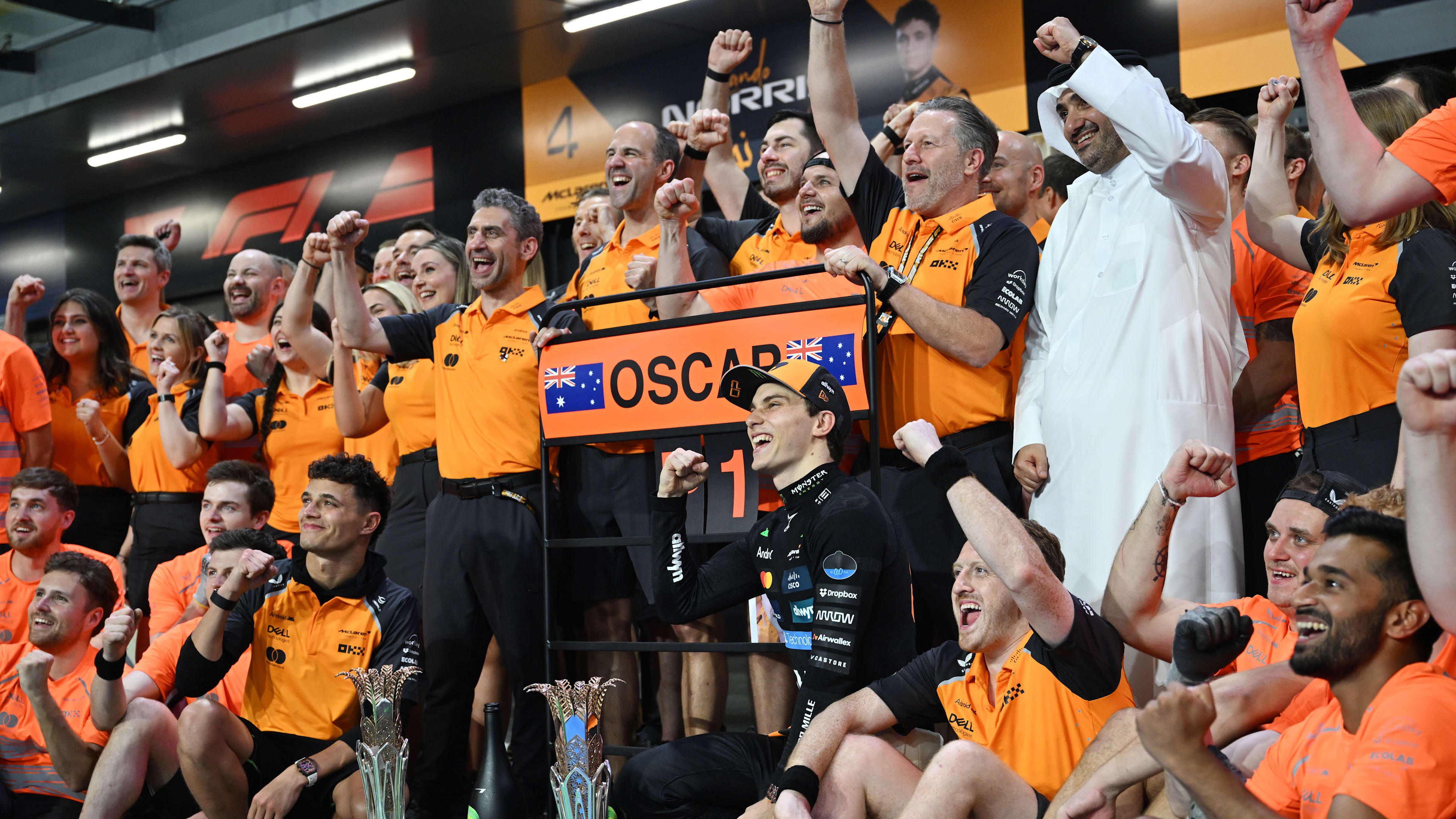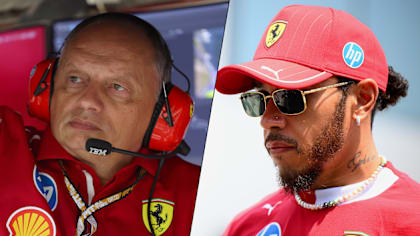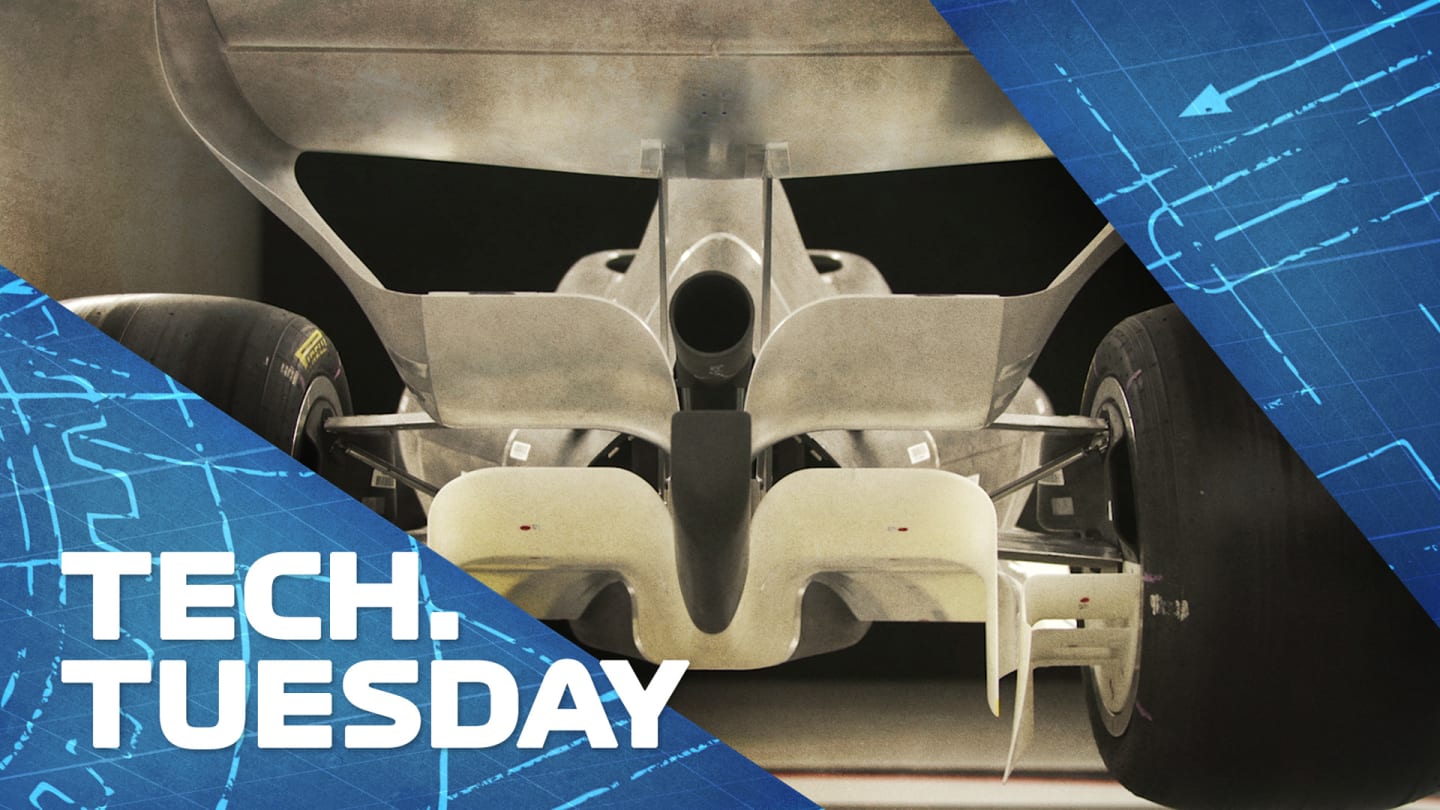
Technical
TECH TUESDAY: Why new floors should help enhance F1's wheel-to-wheel action in 2022

Share

Our latest Tech Tuesday article continues to examine the sweeping changes made to the 2022 Formula 1 ruleset. This week, Mark Hughes looks at the floors of the new F1 cars and why they will make a huge difference to the teams’ philosophies and the on-track action.
Central to the whole concept of the new aero regulations for 2022 is the floor. Gone is the flat floor, which has been regulated since 1983, and in its place is a floor featuring two big channels running from front to rear either side of the central plank.
WATCH: Everything you need to know about the new 2022 F1 car
These will enhance the downforce created by the underbody which, together with the limitations placed upon the upper surfaces of the car, will result in a much bigger proportion of the total downforce created coming from the underbody.
The total downforce generated will be roughly comparable, with any shortfall expected to have been recovered by the end of the season as the teams develop their understanding of the new cars. But it is the proportion of underbody/overbody downforce that will be crucial in improving the racing.
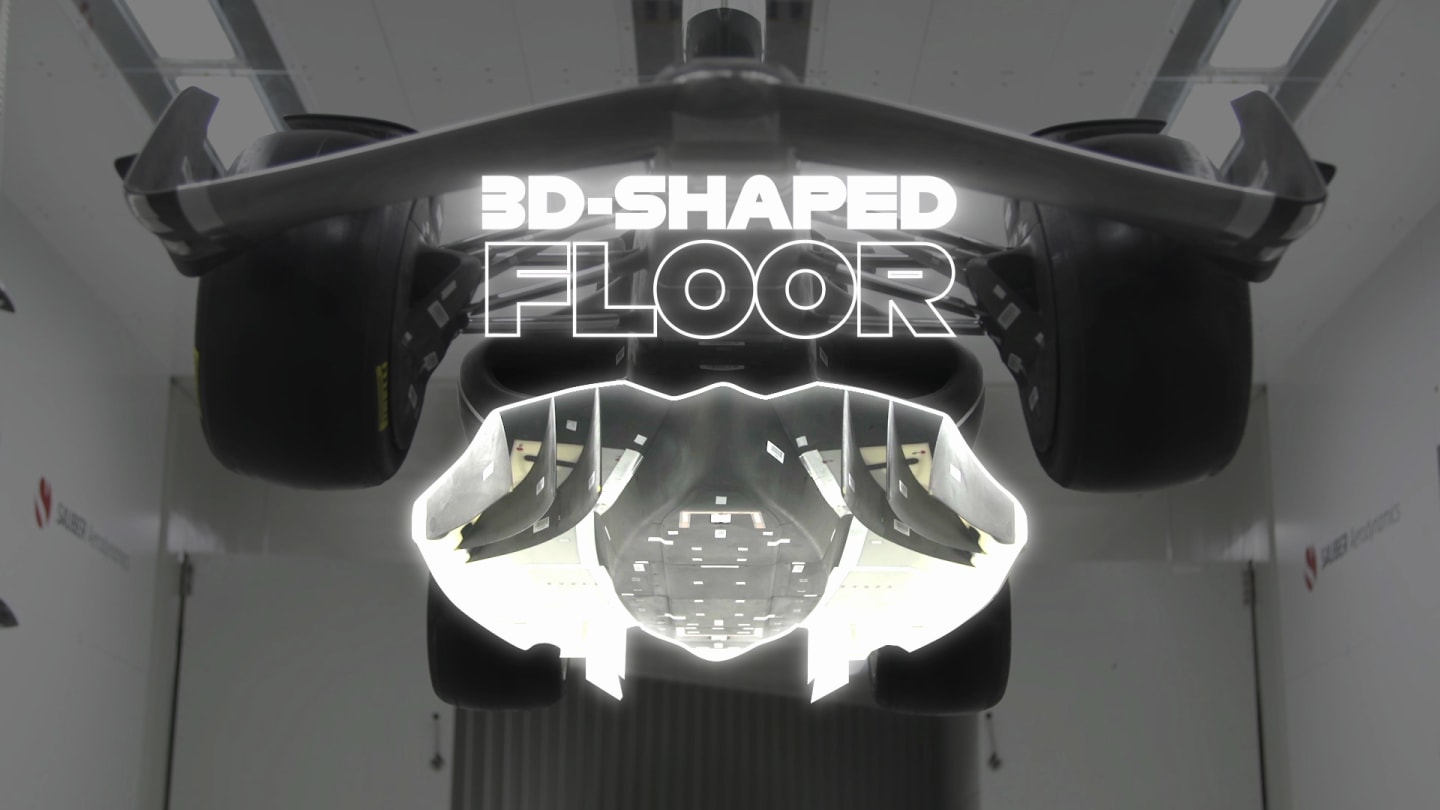
An in-depth view of the 3D-shaped floor, featuring 'venturi'-shaped channels along either side of the central plank
The floor channels are ‘venturi’ shaped, with a wide inlet, a narrowing central constriction and a wide outlet. With the ground forming the bottom surface of this shaped tunnel, the effect on the air pressure of the expanding section at the rear is for it to pull the air through the constricted section much faster than it would otherwise do.
The faster the air moves, the greater the pressure difference between the underfloor and that outside, and the harder the car is sucked into the track.
READ MORE: How the front wing on the all-new 2022 cars has been designed to improve overtaking
The tunnels begin at the front of the sidepods and those wide inlets feature up to four little fences which can be shaped and angled by the teams within prescribed limits. These are there to help pull the air towards the inlet – minimising the amount of air which is pushed outward of the car.
It is the outwash that creates the dirty air which makes things so difficult for the following car, and minimising the extent of this outwash has been the number one priority of these regulations. The fences use the pressure difference across them to both pull the air towards the inlet and to generate vortices which speed-up that inlet air – again creating more underfloor downforce by increasing the speed of the air travelling through the tunnels.
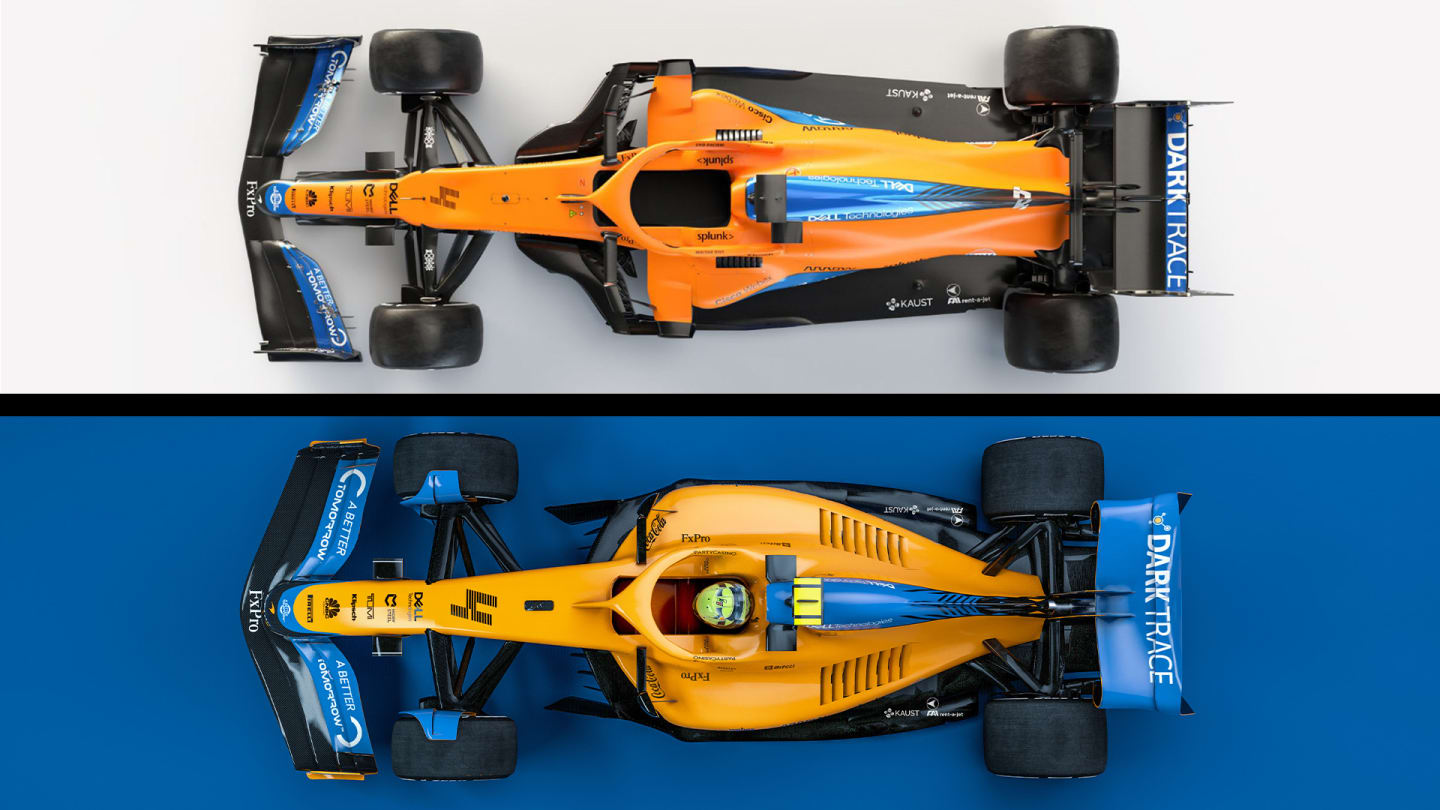
An overhead view comparison of the 2021 McLaren and the 2022 car (below, donning McLaren's 2021 livery) shows the reprofiled floor shape
Maximising the suction effect of these tunnels means forming a seal around them to prevent leakage from the sides. The vortices help do this, as do the new external lateral wings along the external upper surfaces of the floor.
As the tunnels ramp upwards to form the outlet, the angle of that ramp is continued by the bottom of the beam wing. This, in combination with fences at each side, throws the airflow up high, far higher than from the previous diffuser exit, when it was spread low and wide.
This takes most of the air high above the level of the front wing of the car behind, allowing that wing to work much more effectively as it is in higher pressure air. That higher pressure will carry all the way down the car, allowing it to work far more effectively than before when closely following.
READ MORE: 8 reasons the pecking order could be shaken up in 2022
Loss of downforce compared between 2021 and new 2022 car
The exit ramps of the tunnels are much further forward than that of the previous diffuser and this would move the centre of pressure (the aerodynamic equivalent of front/rear weight distribution) forwards. But because the front wing is producing less downforce than before, actually these cars will be aerodynamically balanced front/rear in much the same way as the previous cars at about 40/60% when running in free air. But that aero balance changes far less when following another car.
READ MORE: The 2022 F1 calendar and F1 car launch schedule
Because more of the downforce acting upon the front tyres is being generated by the underfloor rather than the wing, the car is far less sensitive to any turbulence from the car ahead.
In this way, the tunnels hold the secret to what should be much more wheel-to-wheel action between the drivers and more on-track position changes.
YOU MIGHT ALSO LIKE
News Bayer admits Lawson left ‘sad and puzzled' by Red Bull seat swap as he predicts New Zealand driver 'will be back and he will be quick'
News Vasseur calls for Ferrari to be more ‘consistent’ as he highlights where team needs to improve
FeatureF1 Unlocked IT'S RACE WEEK: 5 storylines we're excited about ahead of the 2025 Miami Grand Prix
News ‘I’m 2000% behind him’ – Vasseur backs Hamilton amid early Ferrari struggles as he insists ‘potential is there’
